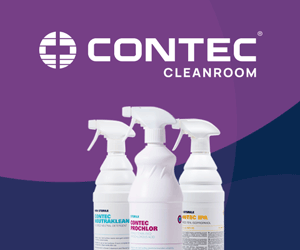A new discovery that could control the spread of deadly antibiotic-resistant superbugs uses nanotechnology to protect a range of everyday items. The discovery is the culmination of almost 12 years of research by a team of scientists, led by Professor Suresh C. Pillai initially at CREST (Centre for Research in Engineering Surface Technology) at Dublin Institute of Technology (DIT) and then at IT Sligo’s Nanotechnology Research Group (PEM Centre).
The research was published in Scientific Reports and involves scientists now based at IT Sligo, Dublin City University (DCU) and the University of Surrey. Major researchers included Dr Joanna Carroll and Dr Nigel S. Leyland. It has been funded for the past eight years by John Browne, founder and CEO of Kastus Technologie, who is bringing the product to a global market. He was also supported by significant investment from Enterprise Ireland.
The breakthrough will allow items from smartphones to door handles to be protected against bacteria, including MRSA and E.coli. The technology can be applied to items made from glass, metallics and ceramics, including computer or tablet screens, smartphones, ATMs, door handles, TVs, handrails, lifts, urinals, toilet seats, fridges, microwaves and ceramic floor or wall tiles. It will be of particular use in hospitals and medical facilities. Other potential uses would include in swimming pools and public buildings, on glass in public buses and trains, sneeze guards protecting food in delis and restaurants as well as in cleanrooms.
Until now, the technology to control antibiotic-resistant superbugs on the surface of items has been based on building or ‘baking’ antimicrobial surfaces into products during the manufacturing process. However, all these materials were toxic or needed UV light in order to make them work.
'The challenge was the preparation of a solution that was activated by indoor light rather than UV light and we have now done that,' said Professor Pillai. The new water-based solution can be sprayed onto any glass, ceramic or metallic surface during the production process, then ‘baked’ into it, forming a super-hard surface. The coating is transparent, permanent and scratch resistant and forms a harder surface than the original glass or ceramic material, rendering it 99.9% resistant to superbugs like MRSA, E. coli and other fungi.
The team first developed the revolutionary material to work on ceramics and has spent the last five years adapting the formula, which is non-toxic and has no harmful byproducts, to make it work on glass and metallic surfaces. Research is now underway by the group on how to adapt the solution for use in plastics and paint, allowing even wider use of the protective material.
Professor Pillai, Kastus and the team have obtained a US and a UK patent on the unique process with a number of global patent applications pending. 'This breakthrough will change the whole fight against superbugs,' said Professor Pillai. 'It can effectvely control the spread of bacteria. The mobile phone is the most contaminated personal item that we can have. Bacteria grows on the phone and can live there for up to five months. As it is contaminated with proteins from saliva and from the hand, it’s fertile land for bacteria and has been shown to carry 30 times more bacteria than a toilet seat.'
'It’s been a long road to here but it was such a compelling story that it was hard to walk away from so I had to see it through to the end,' said John Browne, Kastus CEO. 'This is a game changer. The uniqueness of antimicrobia surface treatment means that the applications for it in the real world are endless. The multinational glass manufacturers we are in negotiations with to sell the product to have been searching for years to come up with such a solution but have failed.'




